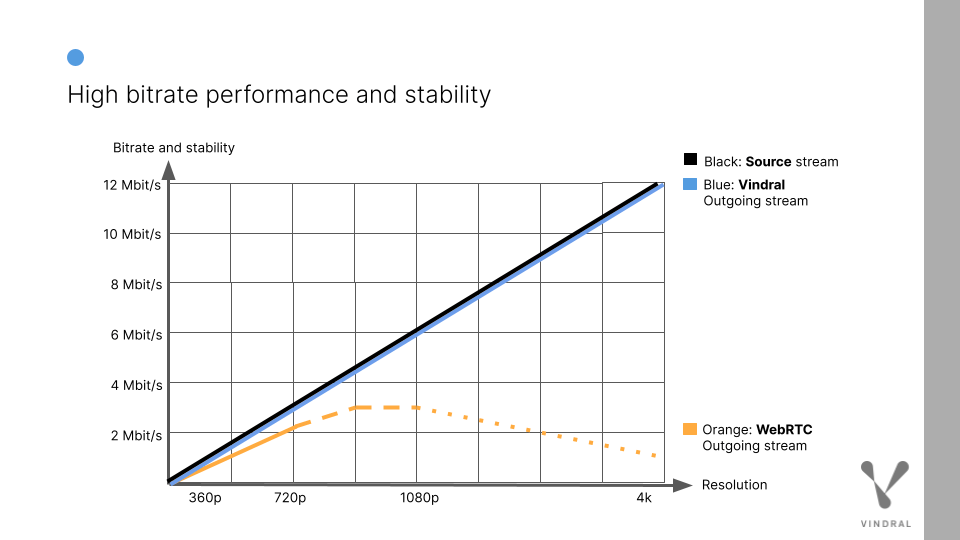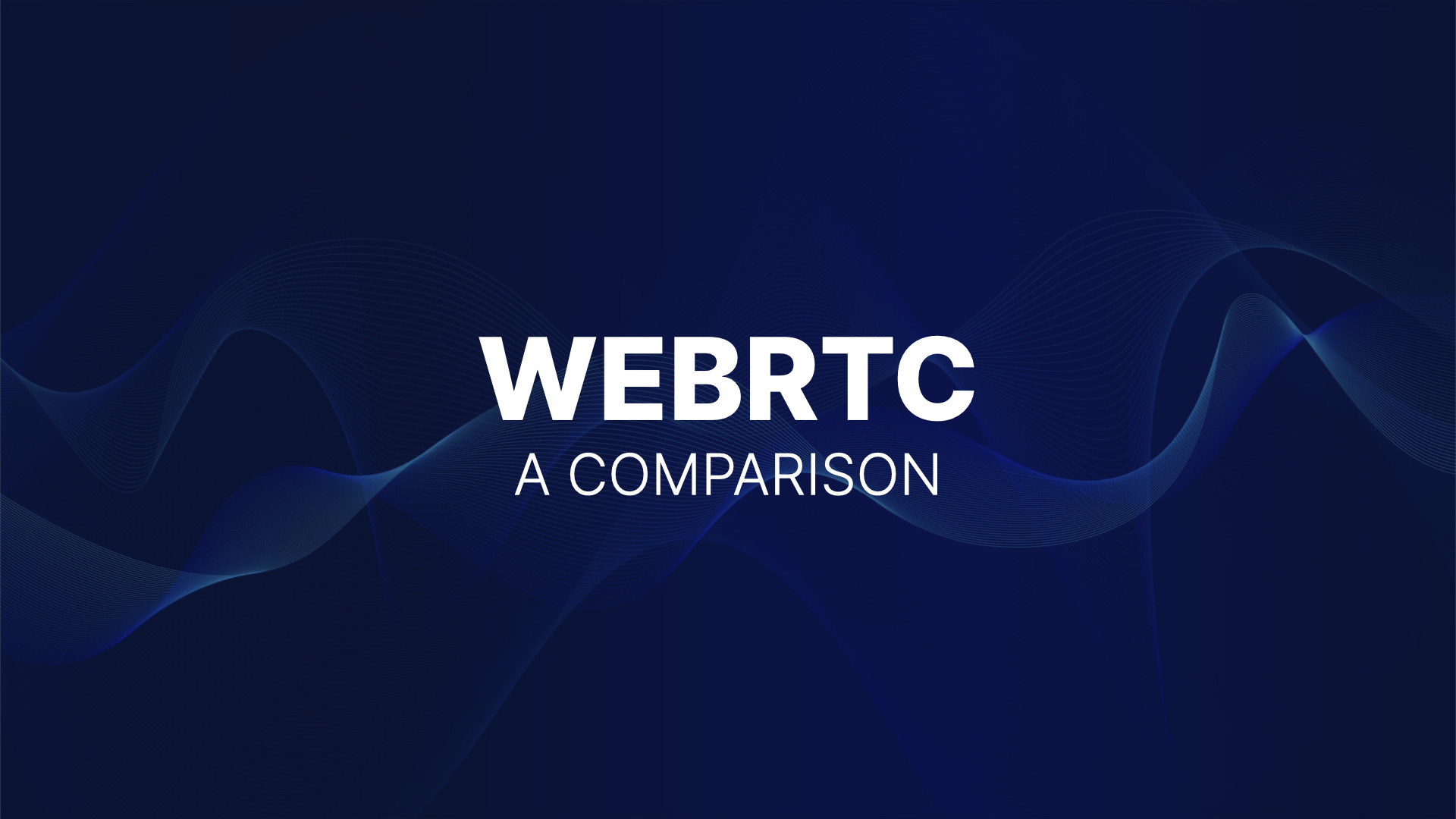Tests based on statistics from AT&T and Verizon demonstrate a clear deterioration in image quality between Vindral LiveCloud and WebRTC. Already at 2 Mbit/s, the difference is profound in terms of video quality, bits/s, and image resolution. Hence, streaming 4K at a higher bitrate (8-12Mbit/s) is close to impossible using WebRTC.
WebRTC: fast delivery, unreliable quality
WebRTC was initially developed as a video protocol for two-way communication. Because of this, it constitutes a substantial advantage in any use case that needs to be close to real-time and where high quality is not a strict requirement. WebRTC has introduced a latency of around 500 milliseconds, making content delivery immediate. This marks a clear improvement over solutions such as HLS and LL-HLS, with latencies varying between at least 2-45 seconds.
Furthermore, WebRTC is open-source and free for anyone to use. Beyond just increasing its accessibility, this holds potential for further development.
But WebRTC was not designed for one-to-many streaming. It fails to deliver as video quality is increased. In general, a longer latency equals higher video quality. For higher video resolutions, WebRTC cannot sustain its latency of 500 milliseconds without sacrificing quality. In cases where high quality is not a requirement, this is less relevant and can even be disregarded. But in cases where high quality is required, WebRTC is not reliable enough.
Advantages of WebRTC
- Near-real-time latency. Hence, it’s the fastest streaming solution (sub 0.5 seconds).
- It’s open-source and free for anyone to use.
- Works in most browsers (Google Chrome, Mozilla Firefox, Opera, Safari).
- No plug-in is needed.
- Supports several codecs.
Disadvantages of WebRTC
- Unreliable when scaled.
- Unable to maintain a guaranteed quality.
- No support for adaptive bitrate.
Vindral LiveCloud
Vindral LiveCloud combines sub-second latency with sync and stability and simultaneously delivers up to 4K video quality. While bitrates above 2-3Mbit/s are too demanding for WebRTC, Vindral LiveCloud provides a configurable buffer, meaning latency can be adjusted to the specific requirements of each use case. Hence, network congestion does not matter since the player has an extended time to catch up. The buffer also ensures that packet loss due to network congestion is kept at a minimum, and packets lost are re-sent. In comparison, WebRTC does not provide a buffer, packet loss cannot be prevented, and network congestions make it unreliable when stability is required.
In short, Vindral LiveCloud guarantees:
- Sub-second latency, with sync, stability, and high quality (up to 4K).
- Improved stability on non-perfect networks. E.g., Wi-Fi, 3G, and 4G networks.
- Adaptive Bitrate (ABR).
- No need for network configuration beyond standard usage of ports 80 and 443.



